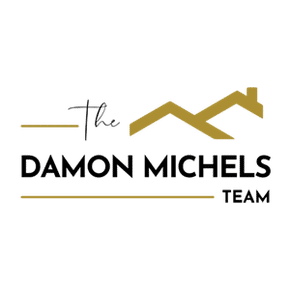Society Hill
About Society Hill
The district is named after the 18th century Free Society of Traders, which had its offices at Front Street on the hill above Dock Creek. Located close to both the Delaware River and Philadelphia's civic buildings, including the Independence Hall, the neighborhood soon became one of the city's most populous areas. Several market halls, taverns and churches were built alongside brick houses of Philadelphia's affluent citizens.
In the 19th century, the city expanded westward and the area lost its appeal. Houses deteriorated until the 1950s, when the city, state and federal governments started one of the first urban renewal programs aimed at the preservation of historic buildings. While most commercial 19th-century buildings were demolished, historically-significant houses were restored by occupants or taken over by the Philadelphia Redevelopment Authority and sold to individuals who agreed to restore the exteriors. Replicas of 18th-century street lights and brick sidewalks were added to enhance the colonial atmosphere. Empty lots and demolished buildings were replaced with parks, walkways, and modern townhouses.
From 1957-1959, the agencies Greater Philadelphia Movement, Redevelopment Authority and the Old Philadelphia Development Corporation bought 31 acres (130,000 m2) around Dock Street. They demolished and relocated the Dock Street market, setting aside 5 acres (20,000 m2) of land that would become the Society Hill Towers.
In 1957, Edmund Bacon, the executive director of the Philadelphia City Planning Commission, awarded developer-architect firm Webb and Knapp the competition for the redevelopment of Society Hill. Architect I. M. Pei and his team designed a plan for three 31-story Society Hill Towers and low-rise buildings. The Towers and townhouses project was completed in 1964, while the entire plan was completed in 1977. Architect Louis Sauer designed dozens of rowhouse projects for the area around Society Hill, including Waverly Court and Penn's Landing Square.
Historic buildings in Society Hill include the Society Hill Synagogue, built in 1829 as a Baptist church by Philadelphia architect Thomas U. Walter, one of the architects of the United States Capitol in Washington, DC. The synagogue was entered into the National Register of Historic Places in 1971. Another notable building is St. Peter's Church, constructed between 1758 and 1761 by Robert Smith.
Education
Society Hill residents are assigned to schools in the School District of Philadelphia. Residents are zoned to the General George A. McCall School, located in Society Hill, for grades Kindergarten through 8 and Furness High School for high school.
Also located in Society Hill is the Saint Peter's School, considered to be the most exclusive private elementary school in Philadelphia. It was formed in 1834 and was originally part of St. Peter's Church, erected in 1761. Saint Peter's offers classes from Pre-School through eighth grade.
Public libraries
The Free Library of Philadelphia operates the Independence Branch at 18 South 7th Street
Read More ▾Avg Work Commute
0 minsMedian Age
0Median Area Income
$0Median Sale Price
$0The Commute
Travel Methods
To City CenterSociety Hill Sales Data
Percentage change from latest quarter vs same time period previous year
Data compiled using 2nd quarter 2024 data vs. same period from 2023
Median Sales Price
MEDIAN SALES PRICE

Demographics
- Filter by:
- Population
- Income
- Education
- Market Rents
Population by Age Level. Median Age 44.59. Households: 4,132.
In Thousand of Dollars. (Median Income: $123,766)
Population by Education Level
Fair Market Rents
Society Hill Schools & Education
Public & Private Institutions Of Learning
Education in the United States is provided by public, private and home schools. State governments set overall educational standards, often mandate standardized tests for K–12 public school systems and supervise, usually through a board of regents, state colleges, and universities. Discover the K12-powered public or private school that is best suited for your child's needs in the area.
Avg School Rating
3.2/5Publically Funded
12Private / Charter
4Catholic / Religious
1Publically Funded
Fanny Jackson Coppin School
Elementary School
- Preschool - 8th Grade
- Student - Teacher Ratio: 13 : 1
-
Great School Rating:
- Website
Nebinger George W School
Elementary School
- Preschool - 8th Grade
- Student - Teacher Ratio: 12 : 1
-
Great School Rating:
- Website
Kirkbride Eliza B School
Elementary School
- Preschool - 8th Grade
- Student - Teacher Ratio: 14 : 1
-
Great School Rating:
- Website
Vare-Washington Elementary School
Elementary School
- Preschool - 8th Grade
- Student - Teacher Ratio: 13 : 1
-
Great School Rating:
- Website
Mccall Gen George A School
Elementary School
- Kindergarten - 8th Grade
- Student - Teacher Ratio: 14 : 1
-
Great School Rating:
- Website
Christopher Columbus Cs
Elementary School
- Kindergarten - 8th Grade
- Student - Teacher Ratio: 15 : 1
-
Great School Rating:
- Website
Meredith William M School
Elementary School
- Kindergarten - 8th Grade
- Student - Teacher Ratio: 15 : 1
-
Great School Rating:
- Website
Christopher Columbus Charter North
Elementary School
- Kindergarten - 5th Grade
- Student - Teacher Ratio: Not Reported : 1
- Great School Rating: N/A
- Website
Mastery Charter High School - Lenfest Campus
Middle School
- 7th Grade - 12th Grade
- Student - Teacher Ratio: 14 : 1
-
Great School Rating:
- Website
Constitution High School
High School
- 9th Grade - 12th Grade
- Student - Teacher Ratio: 16 : 1
-
Great School Rating:
- Website
Creative And Performing Arts
High School
- 9th Grade - 12th Grade
- Student - Teacher Ratio: 15 : 1
-
Great School Rating:
- Website
Academy At Palumbo
High School
- 9th Grade - 12th Grade
- Student - Teacher Ratio: 19 : 1
-
Great School Rating:
- Website
Private / Charter
Chesterbrook Academy
Elementary School
- Kindergarten - Kindergarten
- Student - Teacher Ratio: 6 : 1
- Great School Rating: N/A
- Website
St. Peter's School
Elementary School
- Preschool - 8th Grade
- Student - Teacher Ratio: Not Reported : 1
- Great School Rating: N/A
- Website
Settlement Music School Head Start
Pre School
- Preschool - Preschool
- Student - Teacher Ratio: 6 : 1
- Great School Rating: N/A
- Website
Beginnings Learning Center
Other School
- Student - Teacher Ratio: Not Reported : 1
- Great School Rating: N/A
- Website
Catholic / Religious
St Mary Interparochial School
Elementary School
- Kindergarten - 8th Grade
- Student - Teacher Ratio: 22 : 1
- Great School Rating: N/A
- Website
Where To Drink, Dine, Shop, Relax & Recline





































































































